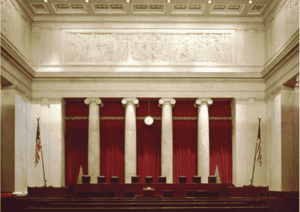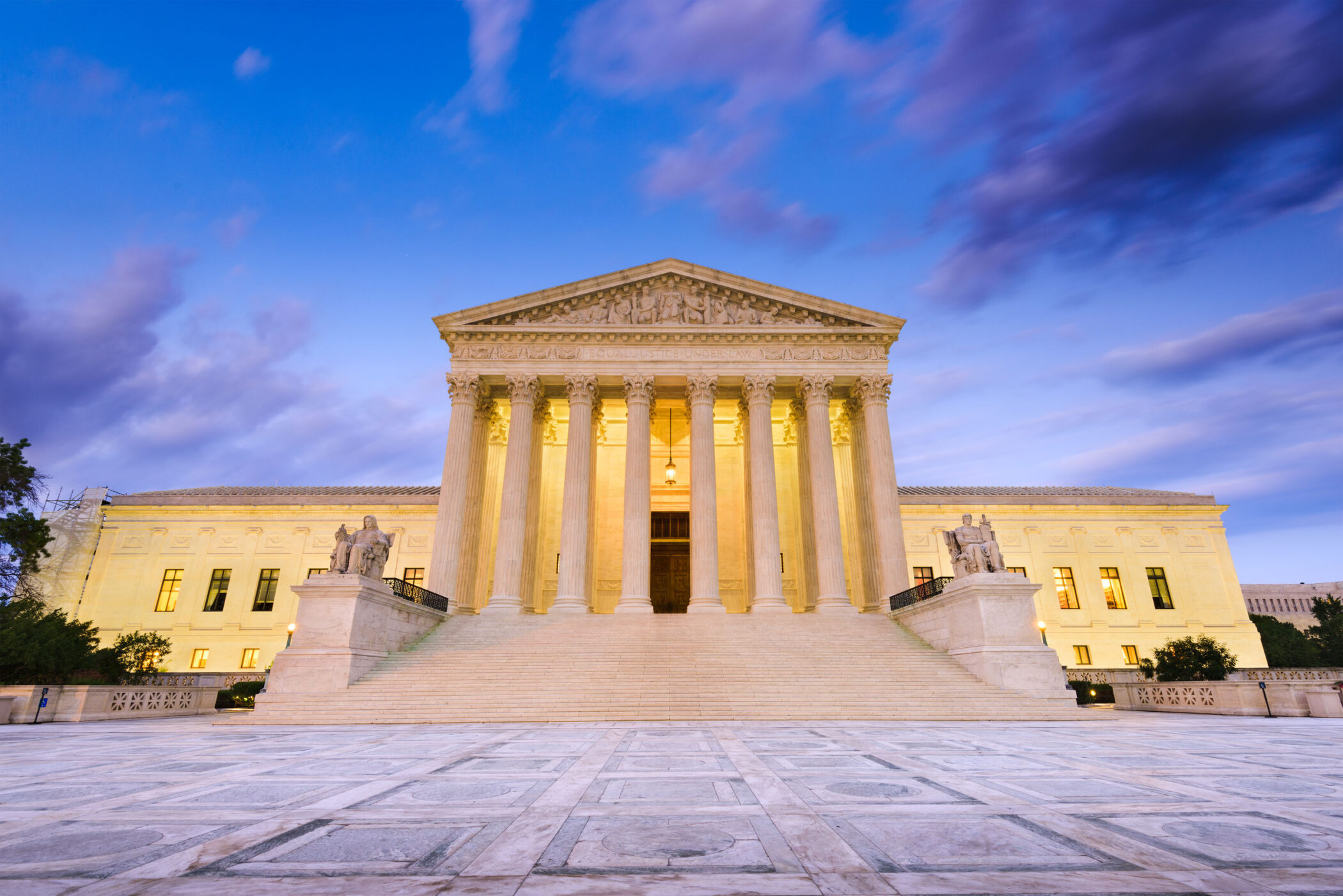The U.S. Supreme Court will consider a Texas law that seeks to protect minors from the sexual content on adult websites. Opponents argue that their First Amendment rights to free expression are in jeopardy if they receive an adverse decision.
Free Speech Coalition v Paxton concerns Texas House Bill 1181 which requires:
A commercial entity that knowingly and intentionally publishes or distributes material on an Internet website, including a social media platform, more than one-third of which is sexual material harmful to minors, shall use reasonable age verification methods as described by Section 129B.003 to verify that an individual attempting to access the material is 18 years of age or older.
The bill defines what constitutes “sexual material” in graphic detail, far removed from Supreme Court Justice Potter Stewart’s 1964 definition of obscenity: “ I know it when I see it.”

The bill also assesses civil penalties to providers for non-compliance with the law.
We asked Hamish Hallett with the public relations agency The Academy and who works with the age verification website Verifymy, about the issues involved in the case and definitions of some of the legal terms:
If I’m a 16 year-old, how will my access to an adult website be affected if the Court rules in favor of the State of Texas?
“If the Court rules in favor of the State of Texas, then all platforms hosting in excess of 33% pornographic content will continue to be required to implement age verification technology.
“If a highly-effective, privacy-preserving age verification solution is integrated then a 16-year-old will not be able to access the adult website.”
“If I’m the same 16-year-old, what prevents me from using my Dad’s email address to pass the age-verification test? A liquor store owner could have looked me in the eye and determined I wasn’t 21 when I tried to buy beer at 16, but what about online?
“After being sent a user’s email address, Verifymy runs it through internal logic and queries it against a number of third party databases. By doing this we are able to establish a number of different websites and apps that the email address has previously been used to interact or transact with. To establish that someone is over 18, these might typically include financial institutions, credit card providers, Mobile Network Operators (MNOs), I-gaming platforms or utility providers.
“The tech then assesses the user’s existing digital footprint – data that already exists. Proprietary logic then builds an age profile of that user and returns a minimum estimated age.
“The method also includes an anti-spoofing mechanic to prevent someone attempting to complete an age check with someone else’s email address. A time-sensitive One Time Password (OTP) is sent to that email account and the user must retrieve it to demonstrate they are the owner of that email address.
“Other age check methods incorporate similar anti-spoofing measures. For example, during a facial age estimation check, a ‘liveness’ check is also completed. This ensures that a real person’s face is being presented for analysis rather than a 2D image. Where an identity document such as a passport is presented, a ‘face match’ can also be completed which compares the face in the identity document with the face of the user via their Smartphone camera or webcam.
What is the Miller Test for obscenity?
“The Miller Test is the legal test for determining whether expression constitutes obscenity – named after the U.S. Supreme Court’s decision in Miller v California (1973). Obscene content is not protected by the First Amendment and can be prohibited.
“The Miller Test has three parts:
- Does the material appeal to prurient interests, that is an excessive interest in sexual content
- Is the material found to be patently offensive by the average person
- Does the material lack serious artistic, political, literary or scientific value
“All three elements need to be satisfied for the material to be considered obscene.
“Most pornography is not legally obscene and may not be banned, but may be regulated to the time, place and manner of its distribution, particularly in order to keep it away from children. In the offline world, courts have upheld the zoning and licensing of pornography dealers.”
May we have examples of the bases of review: Rational, Intermediate Scrutiny, and Strict Scrutiny?
“This case is likely to hinge on the precedent set in the 1997 Reno vs ACLU Supreme Court case. The Court applied ‘Strict Scrutiny’ and ruled the 1996 Communications Decency Act violated the First Amendment. In that case the court upheld that the government can’t protect minors through ‘an unnecessarily broad suppression of speech addressed to adults’ when ‘less restrictive alternatives’ are available.
“Laws that restrict broad areas of speech must stand up to ‘Strict Scrutiny’, and a federal judge struck down the Texas age verification law on that standard in 2023. However, the Fifth Circuit appeals court decided to review the Texas law using a lower standard and ruled that it was constitutional because Texas had a ‘Rational Basis’ for wanting to protect minors from viewing pornography. It also determined that you can now prove your age online with no more inconvenience than when you enter a bar.
“Texas contends the law addresses a public health crisis that is directly related to children’s easy access to online pornography. The state has argued that such exposure harms children’s emotional and sexual development, citing studies linking pornography consumption to increased risk behaviours and long-term psychological impacts.
“The judgement is likely to come down to whether ‘reasonable age verification’ is the least restrictive method to protect minors.
“Age verification technology has evolved hugely over the last 20+ years. It is now commonly deployed online across a number of different sectors. A wide range of privacy-preserving, inclusive methods can deliver a highly-accurate result in just a few seconds. Completing a check is simple and is not an unnecessary burden to an adult wishing to view pornographic content.
“It is worth noting that users do not have to provide an identity document in order to prove their age. That is one option, but individuals can also prove their age in a number of other ways too, including email address age estimation (analysing user behaviour) or facial age estimation (analysing biometrics).
“It’s also important to remember that this law includes a requirement for users to prove their age – NOT their identity. Zero knowledge proof responses (binary yes/no answers) is all that is ever shared with a pornography website. Any other data is deleted as soon as the age check is completed.”
The Supreme Court will issue its decision by the time its 2024-2025 term ends in June.




